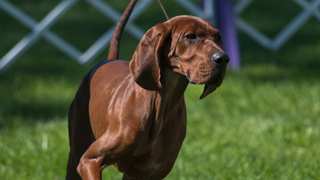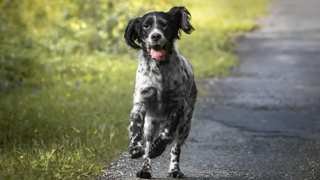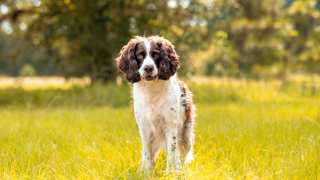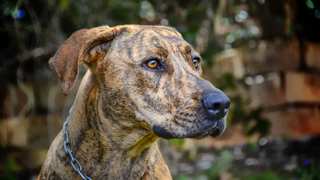These are active, athletic hunting dogs, so Bluetick Coonhound exercise requirements are pretty high. Dogs of this breed are used to spending hours at a time chasing prey in the field, so they'll need a variety of activities that both condition them physically (walking, jogging, fetch) and stimulate them mentally (hunting, canine sports). Blueticks make excellent bicycling companions as well.
The typical adult Bluetick, depending on its age and overall activity level, will need 90 minutes or more of proper exercise per day. And though this seems like a lot, you can break it up throughout the day by giving the dog a couple of walks, jogs, or bike rides along with a good period of play. You can start exercising your Bluetick puppy when it's three months old by taking it on short (5- to 7-minute) leashed walks, then you can increase the walks' length and frequency as the puppy grows. (And since these dogs can be difficult to train, these early walks are a good opportunity to start teaching the puppy obedience, through leash training: have the puppy walk beside or behind you on the leash, instead of being allowed to lead or "tug" on it. This, in the puppy's mind, establishes you as the leader, and should make training easier as the dog matures.)
A few things to keep in mind when exercising your Bluetick Coonhound: first, puppies younger than nine months old shouldn't participate in activities that include a lot of jumping, running on hard surfaces, or navigating of stairs, as doing so can injure their still-developing joints and bones. And regardless of age, all Blueticks must be leashed when in public. These dogs have incredibly high prey drives, and will instinctively chase the scent of most animals--squirrels, birds, cats, even other dogs--if given the chance; a leash will help you control your Bluetick when the dog sees or smells an interesting critter. Even when exercising in your own yard, the area will need to be securely fenced to keep the dog from running off after potential prey. And finally: larger, deep-chested breeds like the Bluetick Coonhound are susceptible to bloat, an often-fatal condition that occurs when a dog's stomach fills with air when it "wolfs" its food; the condition is most prevalent when a dog eats just before or after exercising. This means it's best not to exercise your Bluetick for an hour before or two hours after eating.
Precautions aside, exercising your Bluetick every day is a must. These dogs are accustomed to lots of physical activity, and without it they'll bark excessively (and loudly!), chew and dig, and become disobedient. Consistent exercise will be great for both the dog's and your own peace of mind! A few exercise ideas:
- Walking/Jogging/Bicycling: Two 30-minute walks (or 20-minute jogs or bike rides) per day is a good target
- Fetch/Frisbee: Blueticks will chase a ball, stick, or Frisbee for hours
- Hunting: Puts these dogs in their natural element
- Tug-of-War: Great indoor activity; use a rope or old towel
- Dog Park: If properly socialized, Blueticks enjoy the company of other dogs
- Canine Sports: Blueticks can excel at agility and field trials, lure coursing, and other events
- Hiking: Excellent bonding activity; bonus if you can find a remote area where the dog can be off-leash
When indoors, it's good to give your Bluetick access to balls or chew-toys that'll allow the dog to burn excess energy. You should also establish a regular daily exercise schedule for the dog, such as walks, jogs, or bike rides in the morning and evening and a play period in the afternoon.





